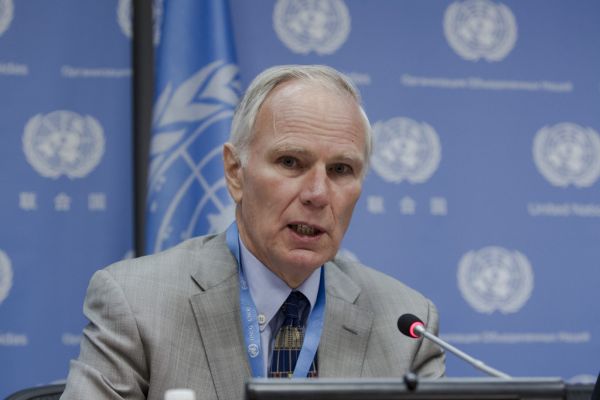

•UN Special Rapporteur Philip Alston
A United Nations official investigating poverty in the United States visited Alabama last week and said the poverty and sewage system there is some of the worst he has seen in the developed world.
“I think it’s very uncommon in the First World. This is not a sight that one normally sees,” said Philip Alston, the UN’s Special Rapporteur on Extreme Poverty and Human Rights, AL.com reported. “I’d have to say that I haven’t seen this.”
Alston is on a 15-day trip of the United States to investigate poverty and visited several counties in Alabama’s “Black Belt” region, an area of several mostly black counties that have long experienced poverty and racial segregation.
One of the issues Alston focused on was the longstanding sewage crisis in that region.
“Lowndes County in rural #Alabama I saw homes that are not connected to public sewage systems, whose owners can’t afford to install septic tanks,” Alston tweeted Friday. “Many resort to digging ditches & straight piping waste water to within meters of homes, posing serious health risks.”
Local resident and activist Aaron Thigpen has lived in the Black Belt region his entire life, according to AL.com. He showed Alston where he lives – an area where diseases like E. Coli and hookworm, which are both eradicated in most of the country, thrive because there is scarce access to clean drinking water due to the sewage problem.
“These two pipes are the raw sewage pipes coming from the house. And you’ve got your main water line here, and it may have a hole in it, so everyone gets sick all at once,” Thigpen said. “It’s really bad when you’ve got a lot of kids around like there are here. They’re playing ball and the ball goes into the raw sewage, and they don’t know the importance of not handling sewage.”
According to the 2017 Alabama Poverty Data Sheet, nearly 20 percent of Alabamians live below the federal poverty line; nine counties have a poverty rate higher than 30 percent; and the child food insecurity rate is 24 percent (the national average is 18 percent).
Alston said he wants his visit to increase awareness of poverty in the United States, including rural Alabama.
“The hope is that we’ll bring attention to [these problems], just like we bring attention to people who are being tortured,” he said. (UPI)










